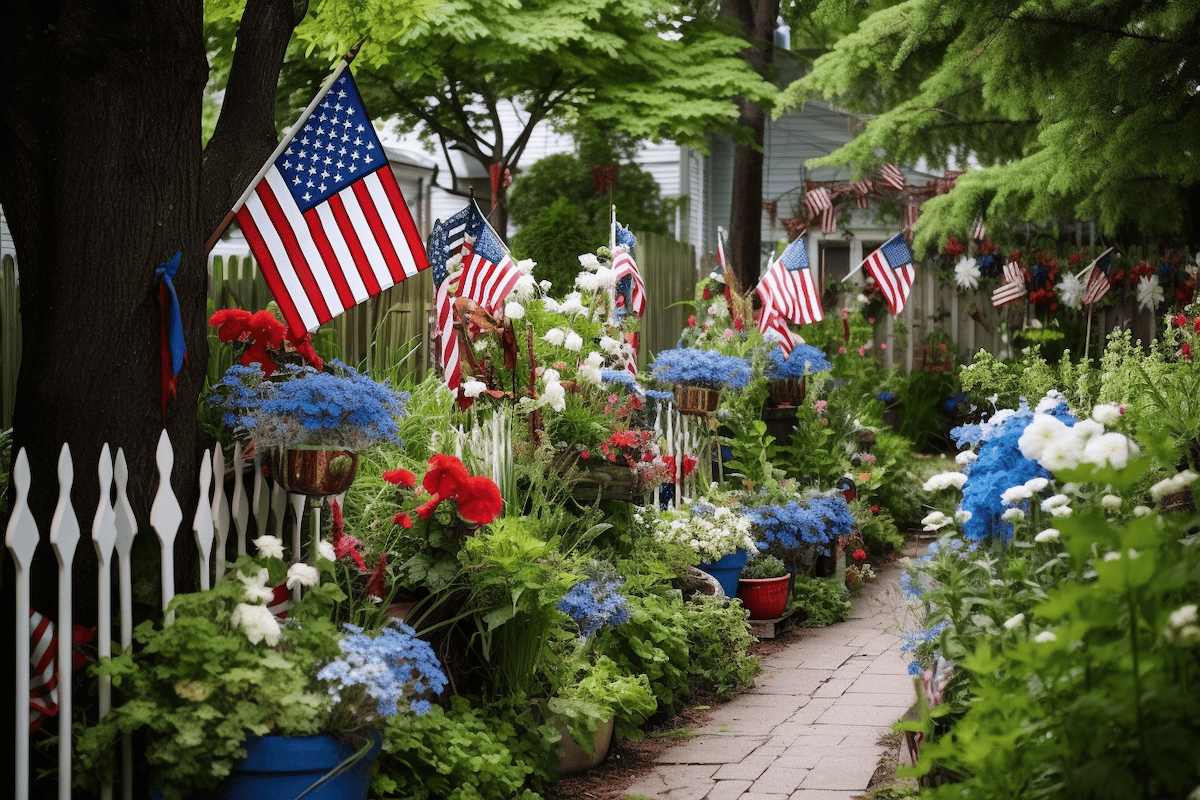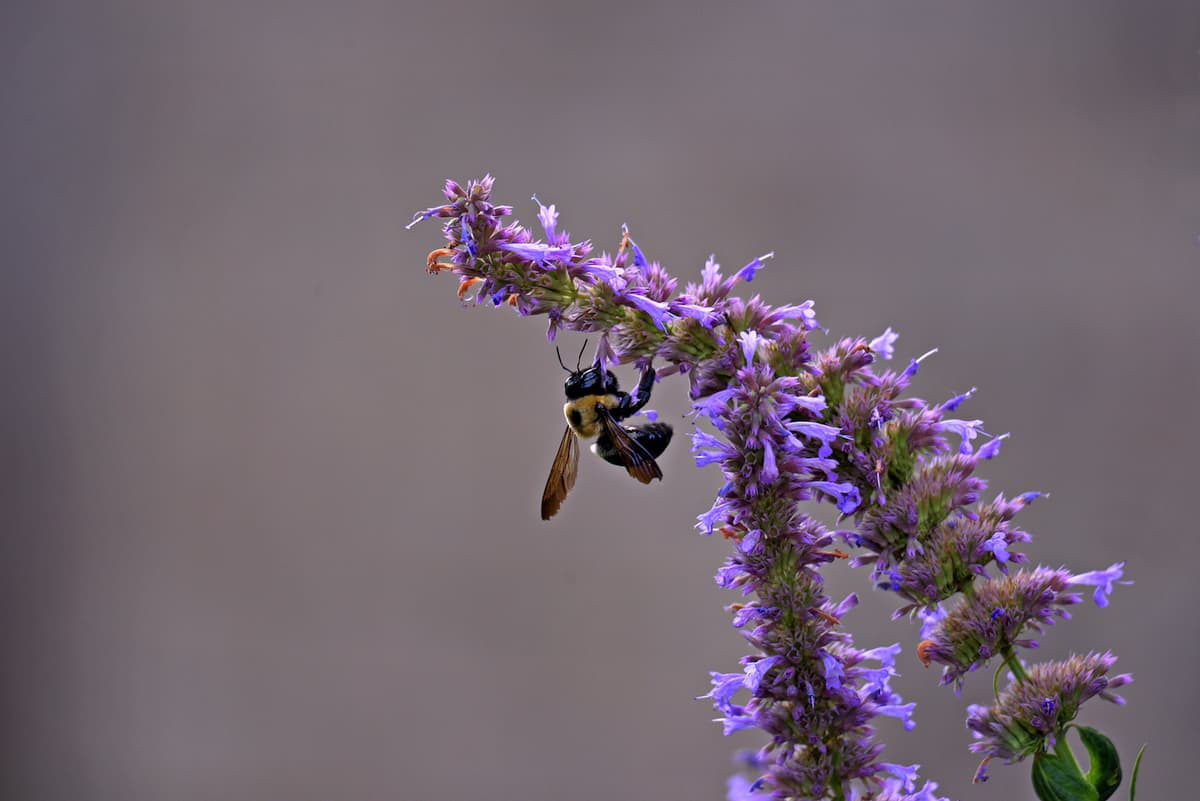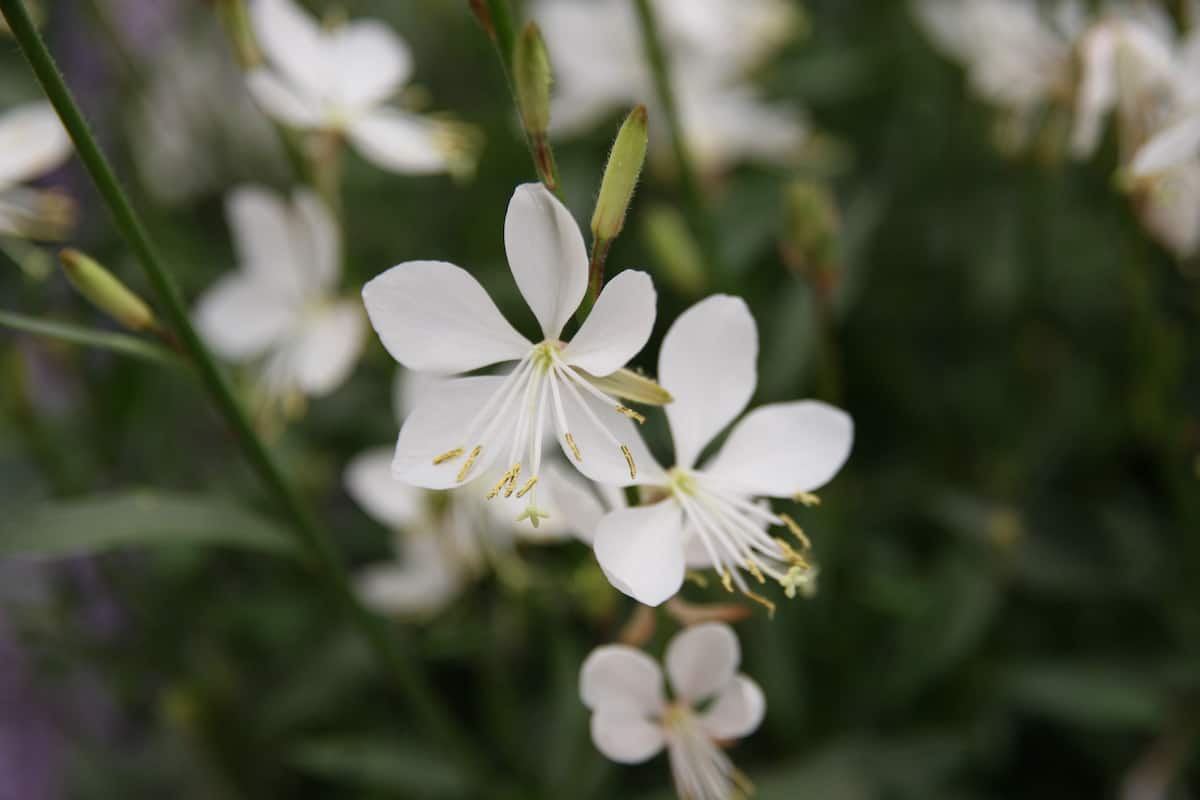In the realm of gardening, color and theme can transform a simple plot into a stunning display of living art.
What could be a more fitting tribute to the national spirit of America than a garden designed around the iconic colors of our flag?
Welcome to our guide on creating your very own 'Stars and Stripes' themed garden, a patriotic tribute teeming with vibrant hues of red, white, and blue.

'Stars and Stripes' Pentas
'Stars and Stripes' is a fascinating cultivar of Pentas lanceolata, a perennial that is widely cultivated for its striking flowers and foliage. The 'Stars and Stripes' Pentas is noteworthy for being the first variegated pentas to be marketed in certain areas.

The 'Stars and Stripes' name comes from the plant's distinctive characteristics. It sports a brilliant display of red star-shaped flowers, each one being about 1-1.5 cm wide, arranged in large terminal clusters, also known as corymbs.
This free-flowering plant produces these vivid red flowers throughout the growing season.
The "stripes" in the plant's name refers to the unique pattern of the foliage. The leaves are green, narrowly ovate to lanceolate, and deeply veined.
In the case of the 'Stars and Stripes' variety, the leaves are not just green but are variegated with a white or light green stripe pattern.
Pentas lanceolata is a shrub, and it grows from one to two feet in height. This makes the 'Stars and Stripes' pentas suitable for growing in mass for flowerbeds or container planting.
The plant is also an excellent houseplant, with its brightly colored, year-round blooms and attractive foliage. In addition, it serves as a butterfly nectar plant, attracting these beautiful insects to your garden.
It should be planted in fertile, well-drained soil enriched with compost and organic matter.
While it prefers full sun for best blooming, the plant also flowers in shade, and it is heat tolerant. Regular feeding with a balanced fertilizer at half-strength every month is recommended for optimal growth and blooming.
These are some other great red plants to add to your stars and stripes garden:
- Red Salvia
- Red Petunias
- Red Geraniums
- Begonia 'Nonstop Red'
- Knock Out Roses
'Blue Boa' Agastache
The 'Blue Boa' Agastache, also known as Giant Hyssop, Anise Hyssop, and Hummingbird Mint, is a striking herbaceous perennial.
The 'Blue Boa' Agastache stands out due to its deep violet-blue flowers, which bloom from early summer to fall.

The flowers are densely packed on long spikes, giving a bold visual appeal to gardens and attracting bees, hummingbirds, and butterflies.
The plant also forms a low, tight mound of ultra-green, aromatic leaves that exude a licorice scent when crushed.
Being drought-tolerant, the 'Blue Boa' Agastache prefers full sun and well-drained soils.
It can tolerate high temperatures and prefers low humidity. Excessive moisture could cause its roots to rot and leaves to yellow.
It only needs occasional but deep watering, mimicking desert conditions. After blooming, spent flower spikes should be cut back to encourage re-blooming and more growth during the bloom season.
The 'Blue Boa' Agastache reaches a mature size of 30-36 inches tall and 24 inches wide, making it suitable for use in sunny borders, gravel gardens, butterfly gardens, banks, and slopes.
Finally, one of the great advantages of the 'Blue Boa' Agastache is its resistance to pests and diseases, including deer and rabbits, which makes it an excellent choice for gardens in areas where these animals are common.
These are some other great blue plants to add to your stars and stripes garden:
- Blue Salvia
- Delphinium
- Bellflower
- Glove Thistle
- Blue Lobelia
- Hydrangea
White Gaura
White gaura is a beautiful and versatile plant that will be a brilliant addition to any patriotic-themed garden.
Originally from southern Louisiana and Texas, it has since been cultivated across many regions and climates. It has the added benefit of being quite low-maintenance.
The white gaura is a perennial herbaceous plant that grows between 20 to 60 inches tall. It stands out due to its densely clustered branched stems that grow from an underground rhizome.

The standout feature of the white gaura, however, is its flowers. The plant's flowers are produced on a 10-to-80-centimeter-long inflorescence and are usually pink or white.
Each flower is 2 to 3 cm in diameter and consists of four petals that are 10 to 15 mm long.
The white gaura is often grown for its ornamental value. When in full bloom, the plant's waving pinkish or white flowers create an almost magical scene.
This sight can last throughout the summer and into fall, especially in USDA growing zones 5 through 9. The blooming period is much longer than most perennials, making it an outstanding choice for long-lasting displays.
Cultivating white gaura requires a location that gets full sun, and it can tolerate dry soils.
It's drought-tolerant and can survive lengthy periods without water, making it an excellent choice for more arid climates or xeriscaping.
These are some other great white plants to add to your stars and stripes garden:
- Shasta Daisy
- Phlox paniculata
- White Coneflower
- Snowdrop
- Japanese Anemone
In Closing

Creating a garden theme around the iconic 'stars and stripes' motif provides an opportunity to express your patriotism in a unique, visually stunning way.
Utilizing the bold colors of red, white, and blue in your plant selections not only symbolizes the American flag but also adds vibrancy and diversity to your garden.
